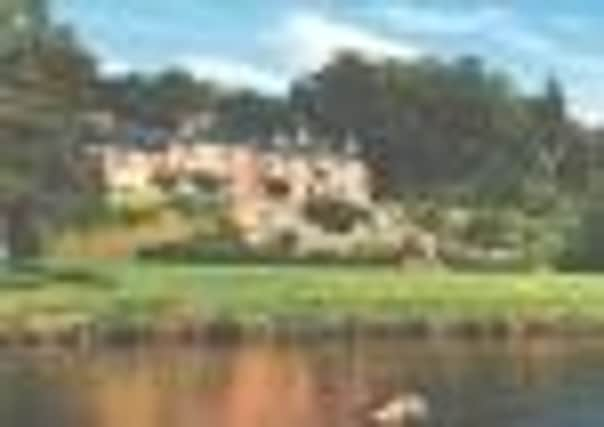For sale: Scotland’s priciest estate


Millden, a vast estate situated in the heart of the Angus glens, long famed for their grouse moors, has been put on the market for an eye-catching £17.5 million.
Stretching to nearly 20,000 acres, the estate has entertained kings and prime ministers over the years and is described by CKD Galbraith, property agents to the gentry, as the “Holy Grail” of grouse shooting.
Advertisement
Hide AdAdvertisement
Hide AdAlong with three recently-improved moors spanning more than 10,000 acres, fishing rights to eight miles of the River North Esk, and extensive woodland, prospective buyers of the estate in Glen Esk will acquire a considerable property portfolio.
The centrepiece is the grand Millden Lodge, a 19th-century shooting lodge that includes ten bedrooms, a gun room, a bar, a billiard room, and various cottages for gardeners and gamekeepers.
Along with two other lodges, Millden, bought by investment banker Richard Hanson in 2004, boasts a dizzying array of more modest accommodation, from cottages to farmhouses. In all, there are upwards of 30 properties included in the guide price, plus numerous lunch huts, sheds, and outbuildings, plus a staff of 16 to help with maintenance.
A spokesman for CKD Galbraith: “This is one of the world’s finest shooting estates and there has been exceptional investment made by its current owner over several years. It will attract considerable interest from people with a passion for the best grouse shooting.”
Chris Hall, director of rural estates at Rettie & Co, said interest remained buoyant in estates such as Millden among Europe’s wealthy elite despite fears of a double-dip recession.
“The sporting estate has not fallen into the same category as the general housing market,” he said. “There’s still good, strong interest in the great majority of rural estates for sale, especially where the dominant feature is thousands of acres.
“Interest is coming from self-made businessmen in the UK, Europe, and occasionally further afield. These estates tend to come on the market around every two decades, as the owners want to pat themselves on the back, have their fun, then sell it on. It’s not something they’ve inherited and they don’t feel a responsibility to pass on to the next generation.”
James Denne, a partner with Knight Frank, agreed: “There is always interest in sporting estates, they are trophy properties, and usually competition for them is pretty strong.”
Advertisement
Hide AdAdvertisement
Hide AdIf Millden meets its asking price, it will become the most expensive Scots country estate ever sold on the open market, leapfrogging the £6 million paid by Danish clothing magnate Klaus Helmersen in 1997 for the 42,000 acre Glenfeshie estate near Kingussie.
Its current owner stands to make a handsome profit. Hanson, who co-founded private-equity house Doughty Hanson, bought Millden for around £10m from well-known philanthropist Dame Vivien Duffield, and invested a seven-figure sum in restoration work.
Located near the village of Edzell, Millden was the first of the sporting lodges built for the Earls of Dalhousie on their Glen Esk estate in the Regency period. Shortly before the beginning of the Second World War King George VI and then prime minister Neville Chamberlain enjoyed a week’s shooting.
In 1931, a record bag of 8,159 brace was achieved, and that productivity continues to this day, with a 90-year average of 2,352 brace, and a 2010 bag of 3,033 brace. This year’s bag is expected to exceed that figure. There are also pheasant and partridge shoots at the estate.
Tim Baynes, a consultant to Scottish Land & Estates and the Scottish Countryside Alliance, described Millden as a “wonderful” property, and urged the new owners to continue the “incredible” work done by its current proprietor.
“Good grouse moors don’t grow on trees, only a handful come on the market each year in the UK, and this is one of the top ones, and one of the best estates,” he said.
“The new owner will have to keep up their investment as moors require a lot of effort to make them productive. Well-run moors do an awful lot of good for wildlife and the community.”